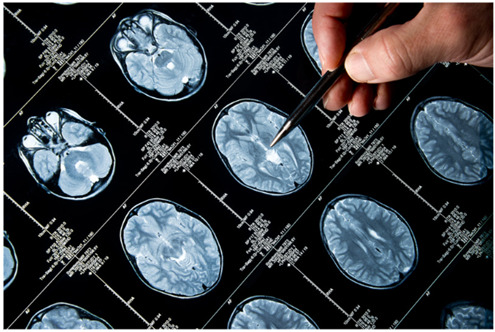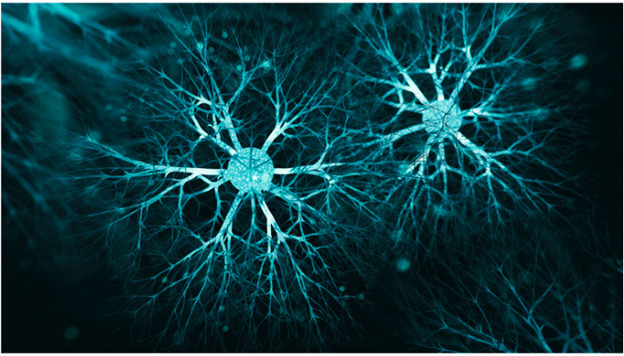
Table of Contents
Groundbreaking technologies are revolutionizing support, and the landscape of mental health has undergone a substantial shift - particularly with the integration of technological advancements to foster improved mental wellness. From virtual therapy to precise brain stimulation, we will explore a variety of innovative healthcare technologies that play a pivotal role in reshaping mental health practices and delivering enhanced support.
Healthcare and Teletherapy
Related Article: 5 Ways to Optimize Your Days in 2024 with ChatGPT
Remote Counseling: Connecting with your Counselor in your Pajamas
Teletherapy has transformed mental health care, offering remote counseling as an accessible and convenient means of connecting individuals with mental health professionals. It provides a virtual bridge between individuals and mental health professionals, irrespective of geographical barriers or scheduling constraints. The significance lies in its unparalleled accessibility, particularly for those in remote areas or with limited access to traditional therapy settings.
The flexibility in scheduling allows clients to engage comfortably, fostering open, honest discussion and cultivating a more profound therapeutic experience. Yet, this approach encounters hurdles - the paramount need for robust privacy measures. Fortunately, teletherapy platforms adhere to stringent privacy protocols, employing encryption to secure all transmitted data. Healthcare providers are also rigorously trained in maintaining patient confidentiality during remote sessions.
Continuous advancements prioritize enhancing security measures and implementing features like secure servers and multi-factor authentication. These efforts are coupled with ongoing evaluations and updates to promptly address any emerging security issues.

AI Mental Health Chatbots
Your Virtual Sidekick During Tough Times
AI mental health chatbots are innovative in providing accessible mental health support. These chatbots, powered by artificial intelligence (AI) algorithms, engage users in conversational interactions, offering guidance, empathy, and resource recommendations. These systems are designed to stimulate human-like conversations, tailoring responses to unders' emotional states and concerns. They provide an avenue for individuals to express their feelings, share their mental health challenges, and receive immediate, personalized support, irrespective of time or location.
One key advantage of these chatbots is their availability 24/7, acting as a continuous, non-judgemental companion for individuals in need. They leverage natural language processing (NLP) and machine learning to analyze users' inputs, understand emotional nuances, and provide empathetic responses. Moreover, they can offer coping strategies, relaxation techniques, and resources for further assistance, acting as a first line of support or complementing traditional therapy.
The evolving nature of AI in mental health holds promise for improved chatbot functionalities, incorporating more advanced emotional intelligence and ethical guidelines.
Related Article: 7 Essential Marketing Technology Trends to Watch in 2024
Tailored Responses for Varied Mental Health Concerns
AI's capability to provide tailored responses exemplifies AI's adaptability and personalized nature of mental health chatbots. These sophisticated systems employ tailored strategies to cater to a broad spectrum of mental health issues, acknowledging the diversity of an individual's emotional needs. Using machine learning algorithms, chatbots can comprehend and respond to various mental health concerns, ranging from anxiety and depression to stress management and mindfulness.
Responses are customized by collecting and analyzing user data, including conversational patterns, emotional cues, and user feedback. Based on this information, the chatbots can offer targeted coping mechanisms, recommendations, and relevant resources specific to each user's mental health challenges. For example, if a user frequently discusses feelings of stress or anxiety, the chatbot may proactively suggest relaxation techniques or mindfulness exercises. The ability of AI chatbots to provide specific responses to a diverse range of mental health concerns highlights their potential as practical tools in supporting mental wellness.
Wearable Stress and Mood Trackers
Real-time Monitoring of Emotional Well-being
A pivotal aspect of wearable stress and mood trackers is the ability to provide real-time monitoring of individual emotional well-being. These devices are designed to offer users continuous insights into their emotional states, providing real-time data on stress levels, mood variations, and physiological indicators, such as heart rate and skin conductance.
Equipped with biosensors, these wearables passively gather data from the user's body, converting physiological signals into meaningful metrics. For instance, heart rate variability (HRV) is an important metric to indicate stress levels and emotional resilience. An increase or decrease in HRV may signify heightened stress or calmness respectively. Skin conductance sensors measure changes in perspiration, reflecting emotional arousal or relaxation.
These trackers' immediate feedback allows individuals to recognize and understand their emotional fluctuations in different contexts. Users gain awareness of stress triggers or patterns that influence their mood, leading to proactive management strategies. Moreover, some devices offer accompanying mobile apps that visualize collected data, offering comprehensive insights and trends over time. These visualizations can help users identify correlations between activities, environments, and emotional states.
Immersive Therapy Through Virtual Reality
Related Article: How to Start Your Data Science Journey with Kaggle in 2024
Immersive Therapy: Escaping Reality for Mental Health
This method of mental health treatment allows individuals to be transported virtually to simulated environments that aid in psychological healing. By providing immersive and interactive experiences, VR therapy temporarily enables individuals to escape reality, engaging their senses in therapeutic scenarios tailored to their mental health needs.
These VR environments are designed to create a sense of presence, allowing users to feel fully immersed and engaged. Therapists can customize these settings to address various mental health issues such as anxiety disorders, phobias, PTSD, and depression. For example, an individual suffering from anxiety could undergo exposure therapy in a simulated environment where they must confront their fears gradually, aiding in desensitization and therapeutic progress.
The immersive nature of VR therapy helps individuals dissociate from their real-world stressors, allowing them to focus solely on the therapeutic exercises or experiences. VR offers a controlled and safe space where an individual can confront distressing situations - or be immersed in relaxed environments - fostering a sense of progress, empowerment, and control.
The effectiveness of VR therapy, however, relies on the quality of the virtual environments, the expertise of therapists in integrating technology into treatment, and the willingness of individuals to engage actively. Advancements in VR technology and its integration with evidence-based therapeutic approaches hold immense potential for expanding mental health treatment options, providing innovative and effective interventions for various psychological conditions.
Brain Stimulation Technologies
Modulating Brain Activity for Improved Mental Health - TMS and tDCS
Brain stimulation technologies have emerged as promising interventions for enhancing mental health by modulating neural activity. Techniques like transcranial magnetic stimulation (TMS) and transcranial direct current stimulation (tDCS) offer non-invasive methods to influence brain circuits implicated in mood regulation, cognition, and emotional processing.
Transcranial magnetic stimulation involves the use of magnetic fields to stimulate specific regions of the brain, primarily the prefrontal cortex, associated with mood disorders like depression. By delivering electromagnetic pulses to targeted brain areas, TMS aims to regulate neuronal activity, promoting neuroplasticity and restoring balance in neural circuits involved in mood regulation. Clinical studies have shown its efficacy in treating depression, particularly for individuals who have not responded to traditional therapies.
On the other hand, tDCS applies low electrical currents through electrodes placed on the scalp, modulating cortical excitability. This method is believed to influence neuronal resting membrane potentials, potentially impacting cognitive functions and emotional states. While the exact mechanisms are still under investigation, tDCS shows promise in enhancing cognitive performance and alleviating symptoms of depression, anxiety, and chronic pain.
These brain stimulation techniques are non-invasive and relatively safe, with minimal side effects compared to conventional treatments. However, their long-term effects
and optimal protocols for various mental health conditions are still subject to ongoing research.

Optogenetics: Precision Stimulation at Cellular Levels
Optogenetics is a neuroscientific technique that enables precise manipulation of neural activity in living organisms using light-sensitive proteins called opsins. This method merges the field of optics and genetics to understand and control the movement of neurons with high precision. With the use of genetic engineering to insert light-sensitive proteins into specific neurons, scientists gain the ability to activate or inhibit those neurons using light.
In healthcare, optogenetics has shown promise in exploring and addressing various neurological and psychiatric conditions. By using specific wavelengths of light to modulate neuronal activity, researchers aim to decipher intricate neural circuits linked to brain disorders like Parkinson's disease, epilepsy, and depression. Understanding these circuits could unravel new therapeutic strategies to modulate neuronal activity and alleviate symptoms associated with these conditions.

Related Article: What is Test-Driven Development? (And How To Get It Right)
Neurofeedback and Brain-Computer Interfaces
Harnessing Brain Signals for Mental Health Insights
Neurofeedback is a technique based on real-time monitoring of brain activity. It has emerged as a groundbreaking approach to mental health management. This method involves measuring brainwave patterns through electroencephalography (EEG) or functional magnetic resonance imaging (fMRI). Individuals can observe their brain activity in real-time, allowing them to learn self-regulation techniques and modify their brain function consciously.
Neurofeedback will facilitate self-awareness and self-regulation of neural patterns by providing visual or auditory feedback based on their brain activity. This can be particularly beneficial in addressing conditions like PTSD, anxiety, and ADHD. Through neurofeedback training, individuals can learn to modulate their brainwaves, potentially reducing symptoms associated with these conditions.
Recent advancements in neurofeedback technology have introduced portable EEG devices and mobile applications, making neurofeedback more accessible outside clinical settings. These user-friendly tools allow individuals to track and regular their brain activity independently, fostering better mental wellness and cognitive performance.
Advancements in Brain-Computer Interface (BCI) Technology
Brain-computer interfaces (BCIs) have evolved significantly, presenting a novel frontier in mental health technology. BCIs establish a direct communication pathway between the brain and external devices, bypassing conventional neuromuscular pathways. These interfaces translate brain signals into actionable commands, enabling users to control external devices or applications solely through their brain activity.
In mental health, BCIs hold promise for aiding individuals with limited mobility due to neurological conditions. They offer avenues for individuals to interact with technology using their thoughts, providing a sense of autonomy and independence. BCIs also present opportunities for cognitive enhancement, potentially assisting in memory enhancement or attention regulation.
Recent developments in BCI technology have focused on improving accuracy, speed, and accessibility. Efforts are underway to enhance the efficiency of BCIs for mental health applications, exploring their potential for therapeutic interventions and cognitive rehabilitation.
Personalized Genomics in Mental Health
Related Article: Vertical Saas and Horizontal Saas - What's the Difference?
Understanding Genetic Predispositions to Mental Health Conditions
Advancements in genetic research have unveiled the intricate interplay between genetics and mental health. Understanding genetic predispositions to mental health conditions has become a pivotal aspect of modern mental health care. Genetic studies have identified specific genetic variations associated with various mental health illnesses, providing insights into the biological underpinnings of these disorders.
Through genome-wide association studies (GWAS) and advanced sequencing technologies, researchers have identified genetic markers linked to conditions like schizophrenia, bipolar disorder, and major depressive disorder. These findings contribute to unraveling the complex genetic architecture underlying mental health conditions, shedding light on potential risk factors and pathways involved. Moreover, genetic testing and counseling services are increasingly available, allowing individuals to gain insights into their genetic predispositions to specific mental health conditions. While these tests don't predict the development of mental disorders definitively, they offer individuals and healthcare professionals valuable information to assess potential risks and take proactive measures for mental health management.
Role of Personalized Genomics in Tailoring Mental Health Treatments
Personalized genomics holds immense potential in tailoring mental health treatments based on an individual's genetic profile. The field of pharmacogenomics, in particular, explores how genetic variations influence an individual's response to psychiatric medications. This information can guide mental health providers in prescribing drugs more effectively, minimizing adverse reactions, and optimizing treatment outcomes.
Personalized genomics also aids in the development of targeted therapies. By understanding the genetic underpinning of mental health conditions, researchers are exploring innovative therapeutic approaches that target specific biological pathways implicated in these disorders. This personalized approach to treatment aims to enhance efficacy while reducing the likelihood of side effects, presenting a paradigm shift in mental health care.
As personalized genomics evolves, it can revolutionize mental health interventions, paving the way for precision medicine tailored to an individual's unique genetic makeup.
Conclusion
These healthcare technologies offer personalized, accessible, innovative methods to improve mental wellness. Each provides a beacon of hope, empowering individuals with tailored, adequate support, steering mental health care toward a future where each person's journey to well-being is met with understanding, accessibility, and precision-driven solutions. Continuous advancements and the fusion of technology and human empathy facilitate a responsive mental health landscape that offers hope for individuals seeking support.